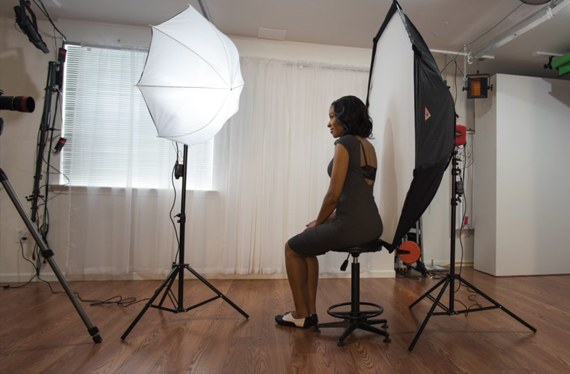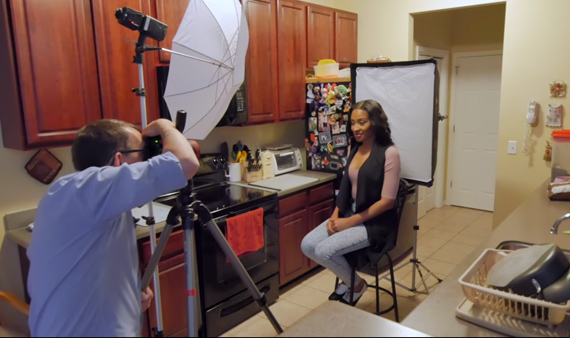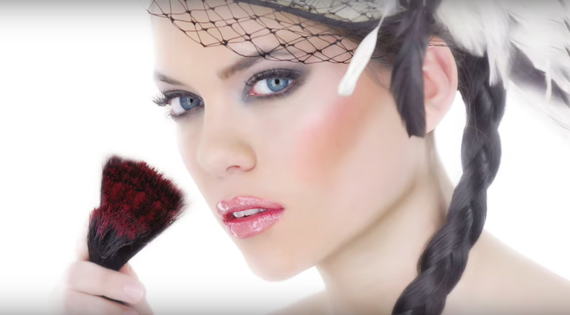Often, when you shoot subjects on a pure white background, the background doesn’t turn out truly white. This can work well if that’s the look you’re going for, but what if you really want your background white? According to advertising photographer Joe Edelman, it’s a simple fix:
Though some photographers shy away from shooting subjects on pure white backgrounds, there’s actually quite a lot that can be done with them. The blank background means that all the focus will be exclusively on your subject, and if you’re doing product photography this is exactly what you want. It’s also an essential component for high-key photography, and it works really well with certain types of portrait and beauty shots.
White backgrounds need to be lit separately from the subject in order to be kept a true white, and for Edelman, the simplest way to do this is to use a softbox as the background. The bigger the softbox, the more workability you have with how you place your subject. With Edelman’s technique you simple put the subject directly in front of the softbox (or 5′ Octodone in this case) and light with a key light as usual.
If you’re working in a tight space, using a smaller softbox works just as well. In this shot Edelman is using a 24×32″ softbox, and he still gets a lot of working room with his subject’s head and upper torso. This setup is not only extremely compact, it’s also quite portable and easy to set up.
Gear Used
- Photoflex 5′ Medium OctoDome Softbox
- Photoflex Medium MultiDome Q39 Softbox 24×32″
- LumoPro LP180R Off Camera Flash
- DigiBee DB800 Flash Unit
Settings
Edelman first plugs in his settings–in this case ISO 64 (his camera’s native ISO) and a shutter speed of 1/200 of a second. With a blank background there’s no reason to shoot wide open, so Edelman narrows down his aperture to something between f/6.3 and f/8 to make sure that the entire subject is in focus, even if they turn their head.
Next, he sets the exposure. Most people would use a light meter, but Edelman prefers a different technique involving the Image Highlights or “blinky” feature on his camera. (This can be found in either your histogram settings or display settings in your camera’s menu.) To do it his way, turn your strobe up to full power and take a test shot with the “blinky feature” turned on. You should have the whole background blinking. Turn down the strobe a full stop and take another test shot. Keep doing this until your test shot shows only part of the background blinking. Go back to the stop before that and you’ll have an evenly lit, not over-exposed white background for the settings you punched into your camera.
The result? Beautiful portraits that focus entirely on the subject.
You can, of course, choose to over-expose your background, but this will give you a fairly low contrast shot that will need a bit more work in post production. Still, with Edelman’s technique of reflecting the light back onto his subject (using a cardboard cut-out!), you can get some great black and white art shots.
Like This Article?
Don't Miss The Next One!
Join over 100,000 photographers of all experience levels who receive our free photography tips and articles to stay current:









White background is very much important for eCommerce business, sometimes photographer use different method for white background its like solid white hard board, sunlight, flash light etc. Information is very and very useful which makes unique form others. For eCommerce business business image is the main thing, clear image is very much expected for the consumer . How about this snowy background for white background.
When it comes to using off camera flash, since it’s really the ratio of ambient-to-flash exposure, wouldn’t the histogram become useless? I don’t like it! I find it very useless really because their is no ideal histogram for each image…all i find it’s good for is if the image becomes over exposed and i use blinkies instead. Otherwise, like i said, ratio of ambient to flash (wouldn’t matter if the image as a whole is under just a little more than anticipated.
Do you have settings for speed lights? I have 3 Nikon 910 lights and would love to try this.